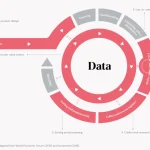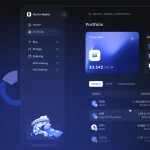
Let’s be honest—sales can feel like a grind. Long hours, tough targets, and the occasional rejection? It’s enough to drain even the most motivated rep. But what if you could turn that grind into a game? That’s where gamification comes in.
Gamification isn’t about turning your team into gamers—it’s about borrowing the psychology of games to make work more engaging. Leaderboards, badges, friendly competition… these aren’t just fun. They’re proven motivators. Here’s how to use them effectively.
Why Gamification Works for Sales Teams
Sales is already competitive—gamification just taps into that natural drive. Think of it like adding a scoring system to a pickup basketball game. Suddenly, everyone’s playing harder, but they’re also having more fun. The same principle applies to your sales floor.
Studies show gamification can boost performance by up to 50%. Why? Because it triggers three key motivators:
- Competition – Even small rewards spark our innate desire to win.
- Recognition – Public acknowledgment (like a leaderboard) fuels effort.
- Progress tracking – Clear milestones make goals feel achievable.
Top Gamification Techniques for Sales
1. Leaderboards (But Do Them Right)
Leaderboards are the classic gamification tool, but they can backfire if they only highlight top performers. Instead, try:
- Multiple leaderboards – Track different metrics (calls made, deals closed, upsells).
- Team-based rankings – Foster collaboration, not just solo stars.
- “Most improved” categories – Motivate newer or struggling reps.
2. Badges & Achievements
Ever notice how even adults love earning badges in apps? It’s the same psychology. Create fun, quirky badges for milestones:
- “Cold Call Crusher” – 50 calls in a week.
- “Closer of the Month” – Highest conversion rate.
- “Rookie Rockstar” – Best new rep performance.
Pro tip: Let reps display badges on their profiles or email signatures—it’s a tiny ego boost that works.
3. Real-Time Progress Bars
Nothing kills motivation like vague goals. Instead of saying “Hit $100K this quarter,” show a progress bar filling up with each sale. It’s like a video game health meter—visceral and urgent.
4. Time-Based Challenges
Short, intense sprints beat marathon slogs. Try:
- “Power Hour” – Most calls in 60 minutes wins lunch.
- “Friday Frenzy” – Bonus points for closing deals before EOD.
These quick wins keep energy high and prevent burnout.
Common Gamification Pitfalls to Avoid
Gamification isn’t a magic bullet. Done poorly, it can demoralize. Watch out for:
- Overemphasis on winners – If only 10% of reps ever rank high, the rest disengage.
- Meaningless rewards – A “gold star” with no tangible benefit feels patronizing.
- Ignoring team dynamics – Too much competition can kill collaboration.
How to Measure Success
Don’t just guess—track metrics before and after implementing gamification. Look for:
| Metric | What It Tells You |
| Deals closed/week | Overall productivity boost |
| Engagement scores | Team morale impact |
| New rep ramp-up time | Effectiveness for onboarding |
Adjust tactics based on data—not just gut feelings.
Final Thoughts: Play the Long Game
Gamification isn’t about gimmicks. It’s about tapping into what already drives your team—pride, progress, and a little friendly rivalry. The best programs feel less like “work” and more like a challenge worth conquering.
So, what’s your first move? A leaderboard? A badge system? Whatever you choose, keep it fresh, keep it fair, and—above all—keep it fun.








